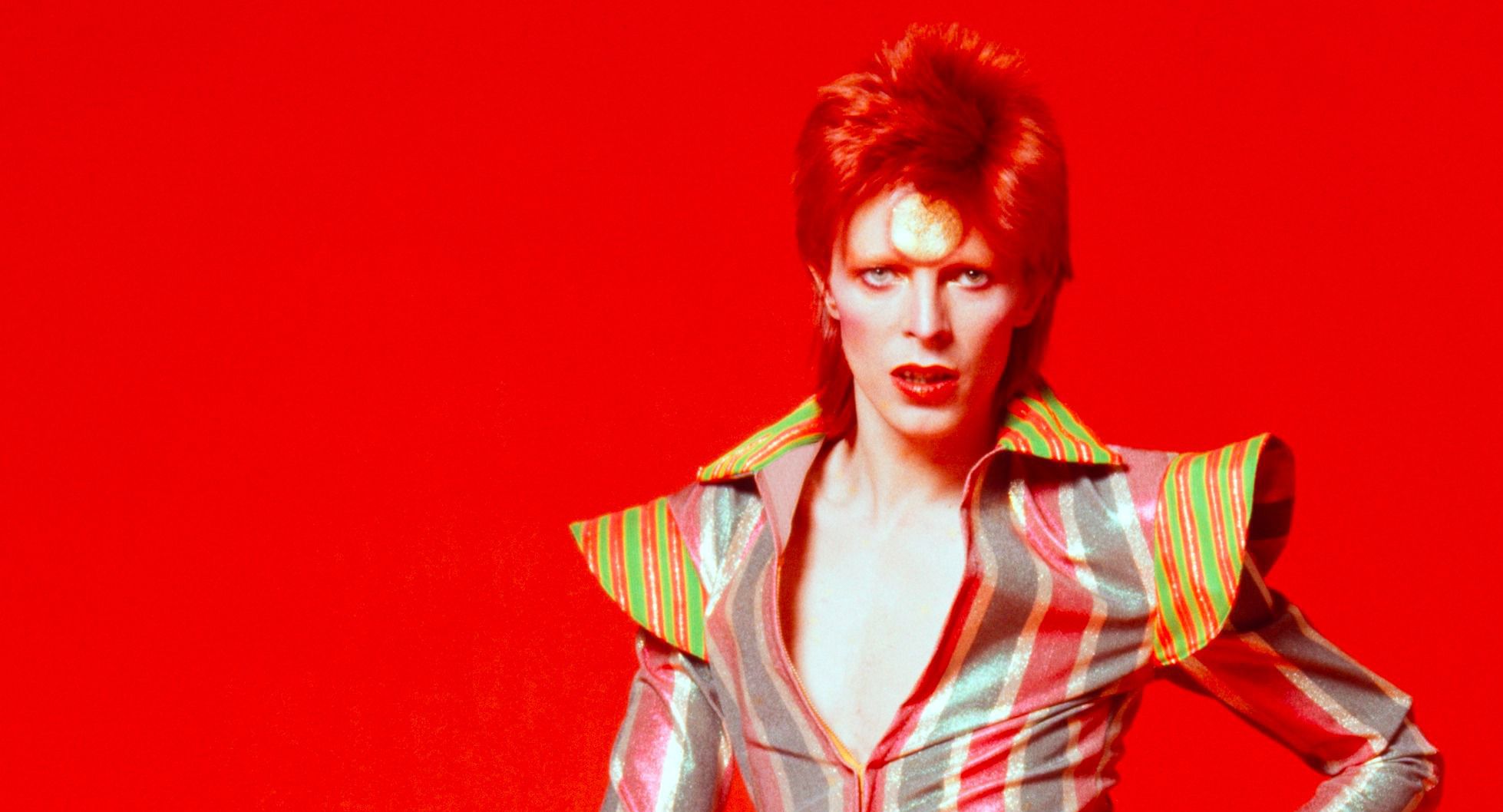The first time I actively listened to a David Bowie song, I was wandering through the College Park IKEA. After weeks of a close friend begging me to give the British star a chance, I finally succumbed and downloaded Bowie’s 1990 compilation album Changesbowie. I remember uninterestedly scrolling through my iPod Nano, starting at the top of the album without much enthusiasm. “Space Oddity” began to play as I wound my way through sofas, chairs and faux living rooms — and suddenly my whole demeanor changed. I can vividly recall sinking onto the nearest ottoman, completely entranced with Bowie’s otherworldly voice and the chaotic backing instruments. I stayed in that position for well over an hour, listening to half the album before my parents finally dragged me out of the furniture superstore. But it was too late — with an hour’s worth of listening, I was already hooked on glam rock.
It wasn’t long after “Space Oddity” that I became fascinated with the rock ‘n’ roll diva’s alternate personality, Ziggy Stardust. The fiery, red-haired, pale-skinned, androgynous alien creature in my mind represented everything that glam rock stood for. The music he produced was definitely rock, featuring wailing guitars, robust saxophone and piercing vocals like no other. It wasn’t just the music, though; his whole being was a performance. From his wild, outlandish costumes to his jerky, almost model-like presence onstage, everything about him screamed glamor. He was beyond unique, yet he wasn’t alone. Bands such as The Sweet, KISS and Queen also adopted this style of performance, providing a steady base of groups that gave the glam rock genre some momentum.
At least, for a little while. One look at the bands and performers that inhabit the scene today, and it seems pretty clear that glam rock isn’t exactly on the rise. Shredding guitar and sparkly leotards aren’t associated together to begin with, but when a wide margin of modern music takes on the form of electrified beats and slick, crisp outfits, the association is even more lost. Is the death of glam rock upon us? Or is the genre as a whole simply changing?
On the surface, it may appear that the genre died a long time ago. Sure, artists such as Lady Gaga and early Nicki Minaj at one point owned the crazy outfit sphere, but both of them missed one crucial element — the rock. Which isn’t all that surprising, considering that the rock genre itself seems to be on the way out. As much as I’d like to argue otherwise, rock itself just isn’t all that popular anymore. What used to be gnarly guitars and crashing drums is now… well, “Closer” by The Chainsmokers.
Maybe mainstream media isn’t where glam rock is going to be prevalent, though. After all, many of the performers who inhabited the genre targeted an audience that was outside the social norm. Artists such as Bowie and Freddie Mercury tended to do this by appealing to queer youth, offering up their music as a form of sexual liberation for young LGBT “outsiders.” They were a gathering point for fringe populations everywhere, providing a platform through which people were encouraged to break free of social norms. Their message was clear-cut and simple: You’re not alone, even when the world seems against you.
With that in mind, there’s one power duo in particular that sticks out as possibly inhabiting the glam rock genre. PWR BTTM is a relatively unknown band that excels in alternative, queercore rock. The two members, Liv Bruce and Ben Hopkins, routinely perform in avant-garde fashion, with audience members following suit by appearing in a multitude of unique glitter concoctions. And what’s best of all: They don’t give a damn about conventionality. Rather than reassure everyone that we’re all equal, their message is one of resistance — that in fact we’re all completely different, and that’s the way things should stay. In the similar frame of Bowie and Mercury, PWR BTTM provides a space for the audience to explore what exactly makes them different while also reassuring them that it’s OK for it to be that way.
Whether glam rock is truly dead is hard to decipher, although with different aspects of it popping up here and there in modern music, I’m confident the genre isn’t completely lost. It’s certainly not thriving, though, yet hopefully with more creations such as PWR BTTM the genre will find its way back to full, glittery, boundary-breaking health.



